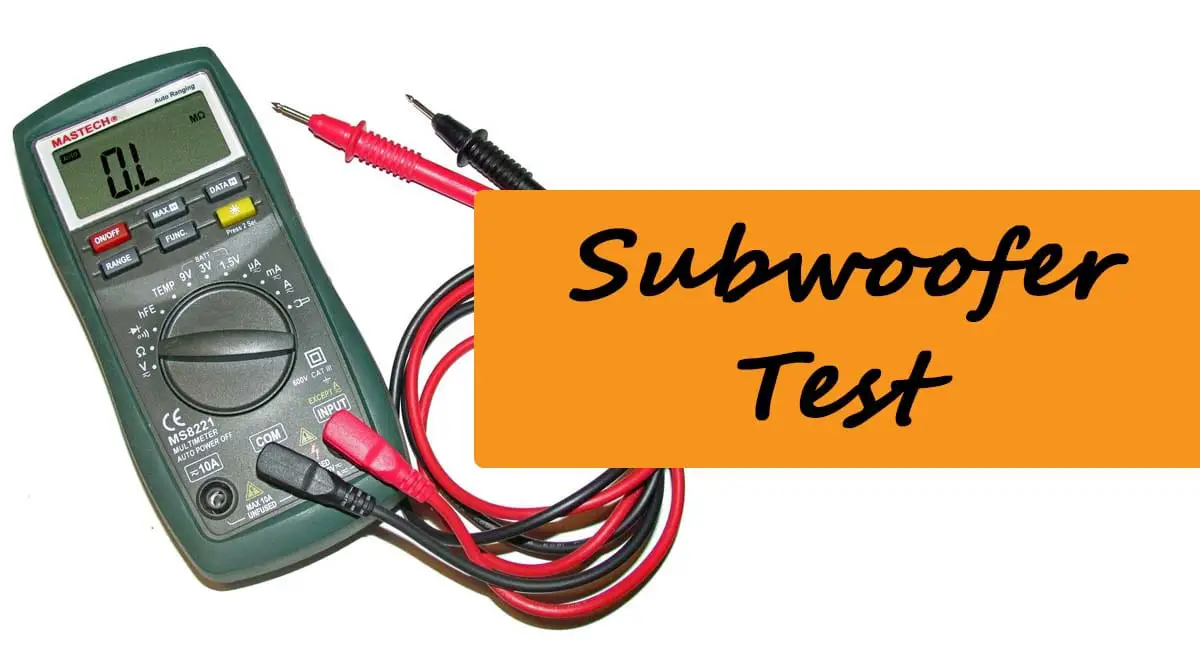If you are not clear whether your subwoofer is blown or not you can use a multimeter to test and check if the subwoofer is really blown.
A multimeter is one of the best ways to completely verify if the sub is blown or if there can be any other problem that is causing distortion or malfunctioning.

Subwoofers and speakers mostly blow when you deliver very high power or if they continue to work for a long time above the RMS power.
Today, we will use a multimeter to test if the subwoofer is blown.
Related: How To Connect Two Wireless Subwoofers To One Soundbar
What is a Multimeter?
A multimeter is a multifunctional electronic device that can test voltage, current, and resistance. It is mainly used to know the continuity of the current between two points.

There are two different types of multimeters but today we use mostly the digital multimeter which is more efficient than the analog multimeter.
What are the Signs of a Blown Subwoofer?
When you hear a distorted sound or no sound at all, it indicates that the subwoofer is blown. You can also know this by touching the voice coil if it is moving at its place or not.
The following are the signs of a blown subwoofer:
- Buzzing or rattling noise
- Poor sound quality
- The cones or other parts have visible signs of damage
- Holes or breaks in the device
- The voice coil is detached from the magnet assembly
- Burnt or melted edges of the cone
Also Read: How To Power a Car Subwoofer at Home
Check a Blown Subwoofer With a Multimeter
We will use a multimeter and check the resistance of the voice coil. The condition of the voice coil will decide the functionality of subwoofer.
Follow the steps to measure the resistance in ohms.
- Turn OFF your subwoofer completely and unplug any power source
- Remove all audio inputs or any cables to make your subwoofer free
- Remove the subwoofer from the enclosure
- Attach the positive multimeter probe to the positive terminal of the voice coil of your subwoofer
- Connect the negative multimeter probe to the negative terminal of the voice coil
- Turn ON the multimeter and you will see the resistance
Results:
- If there is no resistance at all, it means that your voice coils are damaged
- When the reading shifts abruptly, that means your voice coil is damaged completely. It is actually a strong indication of a blown voice coil.
- If the reading is above 1.0 ohm, your coils are safe and sound and the problem may be somewhere else.
Frequently Asked Questions
Read the following commonly asked questions to get more information.
Can a blown subwoofer be repaired?
The repairability depends on the extent of the damage. For example, a worn-out speaker cone foam can be replaced. However, if the voice coil is blown, the repair may not be successful. You may need to replace the cone or the sub itself.
Why my subwoofer is not working?
The subwoofer may be in the standby mode. Make sure your subwoofer is firmly plugged into the power outlet. Connect it to a different power outlet and also check the power cable. Similarly, you should check and replace the fuse.
How to check if my subwoofer fuse is blown?
The filament gets disconnected at one end if the fuse is blown. So, you should carefully observe the filaments at both ends. Tap the fuse and look if the filament vibrates around.
Final Words
It is very easy to check your blown subwoofer with a multimeter. This guide has explained all the steps involved. Ask us if you have any ambiguity.
